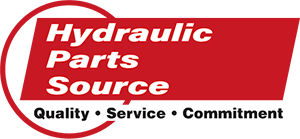Hydraulic Pumps 101: Knowledge to Meet the Needs of Your End-Users
Knowledge is selling power when it comes to meeting the needs of your end-users. Fluid power distributors can take what they learn about customers’ specific pumps, motors, and valves, and put that knowledge to use for their clients.
Hydraulic pumps are one of the most necessary components in a hydraulic system, as they are responsible for converting mechanical energy into hydraulic energy. This hydraulic energy, in turn, results in more mechanical energy. The resulting mechanical energy powers the motors in a hydraulic system, for instance.
The system is dependent on this conversion of power for it to function.
To begin, you should know that there are three major types of pumps in a hydraulic system.- Gear pumps are economical, reliable, durable, and easy to install. Disadvantages are that they become inefficient over time, and they tend to be noisy when operating.
- Vane pumps are more efficient than gear pumps, but less efficient than piston pumps. Advantages include many control options (such as pressure compensation, load sensing, and displacement controls) and being less noisy. There are a few areas where a vane pump is not a suitable solution, such as when an application requires a high viscosity fluid at a high pressure.
- Piston pumps are capable of high pressure, are efficient (95%), and have nearly infinite methods of control. The downsides? These pumps are higher cost when it comes to both purchase and repair. They require complex service, which is unfortunate considering the mechanical parts in a piston pump are also more prone to wear.
Initially, it may be helpful to determine the pump type needed for an application, then seek out specific features within that type. Many hydraulic pump brands offer pumps that meet a variety of specifications based on common features.
Knowledge of these “specifics” is a great way to help buyers make a good decision.
Some specific features to learn about – and that we offer more information on in this article – are as follows:
- Fluid type and flow rate
- Torque requirements and power needs
- Speed and pressure
- Fixed or variable displacement
- Maintenance needs
Fluid Type and Flow Rate
Before looking at flow rates and fluid types, note the hydraulic pump’s optimal oil viscosity. A fluid that has too low or high a viscosity can limit the pump’s efficiency and increase wear. Be aware of The Society of Automotive Engineers’ (SAE) viscosity grading system and Viscosity Index (VI).Second, determine what fluid type should be used to match the pump’s specifications. Most pumps will work well with standard hydraulic fluid.
Characteristics of other fluid types can also be considered:- Biodegradable: Reduces environmental risk in case of spills, are high in lubricity, and anticorrosive
- Phosphate ester: Has high thermal stability, lubrication, and anti-wear properties; it is also fire resistant, less viscous, and is more expensive than biodegradable
- Water glycol: Generally, this fluid is made of 38-45% water, with additives that can offer corrosion resistance, oxidation resistance, and anti-wearing properties
- Pump speed in revolutions per minute (RPM)
- Pump efficiency in a percentage
- Displacement value
Torque Requirements and Power Needs
The power of a pump is the result of the combined torque and rotational speed. Each pump has a torque requirement; learn more about how to calculate torque requirements in this article from Power & Motion.Most pump drive manufacturers rate their units by the amount of input torque they are capable of handling, so knowing this will help narrow down a model. The wrong calculated torque could result in reduced service life, or worse, in failure.
Pumps have a maximum operating pressure listed in bars or pressure per square inch (PSI).
To determine the hydraulic power needs for the pump, consider applying the formula: Power = (P x Q) ÷ 600.
Power is in kilowatts [kW], P is the pressure in bars (or PSI imperial), and Q is the flow in liters per minute (metric) / gallons per minute (imperial).
You can find a variety of other helpful fluid power formulas as well as calculators here.Speed and Pressure
Operating speed looks at the revolutions per minute that the driveshaft makes. Be aware of how different designs have higher or lower operating speeds.Pumps have a maximum operating pressure listed in bars or pressure per square inch (PSI). This rating identifies where a pump can effectively withstand pressure without leaking or damaging the parts.
Fixed or Variable Displacement
Hydraulic pumps are available in both fixed displacement and variable displacement options. Fixed displacement means the pump can displace a constant flow depending on RPM, while variable displacement means it can vary the displacement based on load, HP, RPM, and demand.This makes variable displacement pumps good for a wider variety of tasks, and they are also better for efficiency and energy savings. Fixed displacement pumps work well for performing the same task repeatedly, but are less efficient overall.
Maintenance Needs
The time needed to maintain hydraulic pumps, the frequency of said maintenance, and extra costs maintenance entails should also be considerations when determining which hydraulic pump is most beneficial for your end-user.Some pumps are costlier than others to maintain. Staying on top of maintenance can help your end users extend their pump’s life and improve performance, so planning ahead for those maintenance considerations is key.
The More You Know, The More You Sell
To keep your buyers / end-users happy, get to know the pros and cons of each pump type, including how each characteristic of the pump (fluids/flow rate, torque, power, speed, pressure, displacement, and maintenance need) fit with what the end users will find the most efficient and cost-effective.Being informed about specifications can be used to determine pump type & displacement for each of your customer’s needs. It will provide you with a strong foundation of knowledge for helping future customers!

